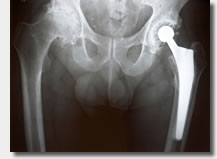Product Liability
 The U.S. Food and Drug Administration (“FDA”) is one of the country’s
oldest consumer protection agencies. The FDA’s purpose is to promote
and protect the public’s health by trying to ensure that safe and effective
products reach the market; to monitor products for continued safety after
they are in use; and to help the public get accurate, science-based information
regarding health issues.
The U.S. Food and Drug Administration (“FDA”) is one of the country’s
oldest consumer protection agencies. The FDA’s purpose is to promote
and protect the public’s health by trying to ensure that safe and effective
products reach the market; to monitor products for continued safety after
they are in use; and to help the public get accurate, science-based information
regarding health issues.
The Center for Devices and Radiological Health (“CDRH”), a division of the FDA, must approve a medical device before it can be marketed to the general public. The CDRH is responsible for testing and approving every medical device to ensure that it is both safe and effective. The CDRH may discover a defect that prevents approval. If the device is approved and a defect is then discovered, the FDA may request a voluntary recall by the manufacturer or issue a recall if the manufacturer refuses to comply.
Injury or loss may be caused by a medical device. An individual person who has been injured using a medical device may be able to sue the manufacturer, wholesaler, company or person that sold the product for damages. A lawsuit can be brought against any person or company that was involved in producing or distributing the medical device. There are three main categories in which evidence can be shown to prove a device is defective:
- Design defect - There is a flaw in the conceptual design of the device.
- Manufacturing defect - There is a specific defect which occurs during the manufacture of the device.
- Warning defect - The device is not accompanied by adequate or reasonable warning or there has been a failure to educate the consumer at to potential and latent dangers regarding the device.
In some cases, the manufacturer of a medical device will clearly inform the physician community about the risks of a device and it then becomes the obligation of the physician to communicate those risks to the patient.
These cases are subject to a statute of limitations which is the fixed period of time in which a person must file a claim. The statute of limitations usually begins when the patient’s illness or injury is discovered, rather than when the injury happened.
If a manufacturer, wholesaler or company that produced or sold the device is found at fault, a court can order them to pay damages. Depending on the state where the injury occurred, the following damages may be allowable:
- Economic damages: Compensation for monetary losses such as past and future medical expenses, loss of past and future earnings, loss of employment or business opportunities.
- Non-economic damages: Compensation for subjective, non-monetary losses such as pain, suffering, inconvenience, emotional distress, loss of society and companionship, loss of consortium, and loss of enjoyment of life.
- Punitive damages: Damages awarded for the purpose of punishing a party for intentional or reckless behavior or actions motivated by malice.
Links:
» U.S.Department of Health & Human Services
» Medline Plus
